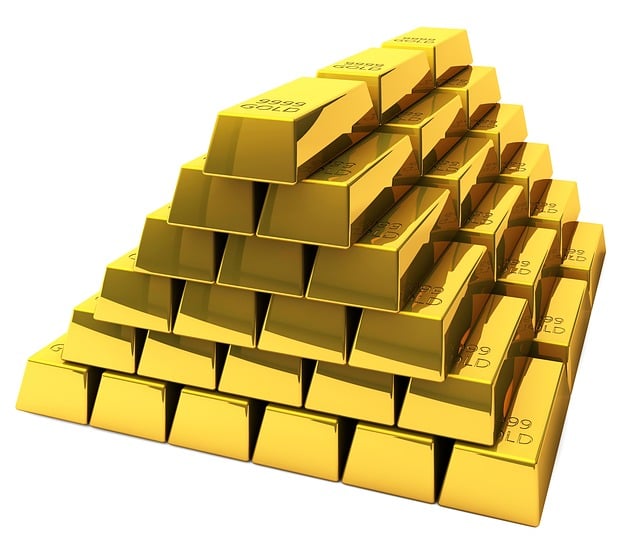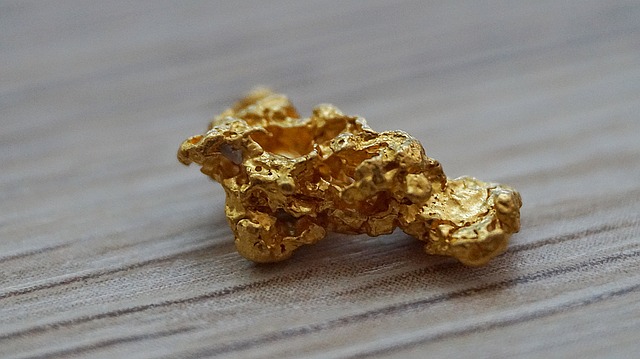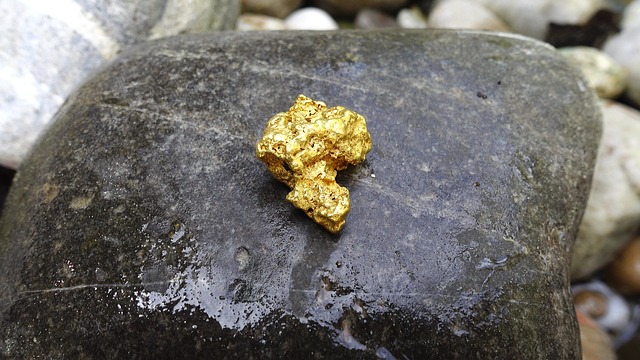
Legacy precious metals, including gold, silver, platinum, and palladium, have historically been a reliable wealth preservation tool and inheritance vessel, maintaining value across generations. They serve as safe-haven assets against economic instability, inflation, and market turbulence, offering tangible historical connections and diversification benefits for investment portfolios. These metals hold intrinsic worth and diverse applications from currency to industry, with legacy precious metals reviews consistently emphasizing their value proposition and enduring performance over time. Investors are encouraged to consider the historical context, purity benchmarks, and risk mitigation qualities of these assets as part of a long-term investment strategy. With their unique properties and applications, these metals continue to be relevant in modern economic landscapes, providing a distinctive investment journey with a lasting legacy.
Embarking on an exploration of legacy precious metals reveals a timeless narrative woven into the fabric of wealth preservation and inheritance. This in-depth guide demystifies their historical significance, evolution, and role within diverse investment portfolios. From the composition and types to the intricacies of market dynamics, this article offers a comprehensive overview. It delves into factors influencing valuation, guides on reviews and consumer insights, and elucidates the legal landscape for investors. With insights on acquisition, storage, global economics’ impact, and investment strategies, it also addresses authenticity and purity concerns. Future prospects of legacy precious metals are illuminated through case studies, FAQs, and concluding thoughts, ensuring a well-rounded understanding for those interested in their place in financial planning.
- Unveiling the Essence of Legacy Precious Metals
- Historical Significance and Evolution of Legacy Precious Metals
- Composition and Types of Legacy Precious Metals
- The Role of Legacy Precious Metals in Wealth Portfolios
- Understanding the Market Dynamics for Legacy Precious Metals
- Factors Influencing Legacy Precious Metals Valuation
Unveiling the Essence of Legacy Precious Metals

Legacy precious metals have long been a cornerstone for wealth preservation and inheritance across generations. These metals, including gold, silver, platinum, and palladium, carry with them a rich history of use in coinage, art, jewelry, and industrial applications. Their enduring value is evident in the way they maintain their worth even amidst economic volatility. Reviews of legacy precious metals often highlight their role as a hedge against inflation and market instabilities, providing investors with a tangible asset that can be passed down through family lines. Investors looking to understand the essence of these metals should consider their historical significance, purity standards, and the security they offer in diversifying investment portfolios. The allure of legacy precious metals lies not only in their financial security but also in the tangible connection to history and tradition they represent. Each piece of metal carries a story, a testament to its role throughout human civilization, from ancient currency to contemporary collectibles. Engaging with legacy precious metals is thus an engagement with a timeless narrative of human prosperity and resilience. Reviews by seasoned investors often underscore the importance of these metals as a long-term investment strategy, emphasizing their ability to preserve purchasing power over time. For those interested in safeguarding their financial future or exploring the historical significance of precious metals, legacy options offer a unique and enduring path.
Historical Significance and Evolution of Legacy Precious Metals

Throughout history, precious metals have held significant value both as a store of wealth and as symbols of status and power. Legacy precious metals, with their deep-rooted historical significance, trace their origins back to ancient civilizations. These metals, including gold, silver, platinum, and palladium, were among the first commodities traded, with their use spanning from currency to jewelry, artifacts, and industrial applications. The evolution of these metals over time reflects societal advancements, economic shifts, and cultural transformations. For instance, the Gold Standard, once a cornerstone of monetary systems worldwide, illustrates how these assets have been integral to financial stability and economic policies.
The legacy of precious metals is further embedded in contemporary society through investments and collectibles. Legacy precious metalls reviews often highlight their role as a hedge against inflation and market volatility, emphasizing the enduring trust in their value. The evolution of these assets has seen a shift from physical ownership to diversified investment products, yet the fundamental appeal remains unchanged. Today, investors and collectors alike turn to legacy precious metals for their proven track record as a preservation of wealth, making them an enduring component of a balanced portfolio.
Composition and Types of Legacy Precious Metals

Legacy precious metals are a testament to humanity’s long-standing fascination with materials of intrinsic value. These assets, which include gold, silver, platinum, and palladium, have been used for currency, jewelry, and industrial purposes for centuries. The composition of these legacy metals is significant; gold is known for its high density and malleability, making it an ideal store of value. Silver boasts excellent electrical and thermal conductivity, which has applications in technology and medicine. Platinum’s durability and resistance to corrosion make it indispensable in catalytic converters and laboratory equipment, while palladium is often used in electronics and dental alloys.
When evaluating legacy precious metals, reviews from investors and analysts provide valuable insights into their performance and reliability. Investors looking to add these metals to their portfolios should consider the types available, such as coins, bars, and bullion, each with its own storage and liquidity characteristics. Coins, for instance, carry a face value and are legal tender, whereas bars and bullion offer purity guarantees and often come with assay certificates. The choice between these forms depends on the investor’s preference for tangible assets, desire for privacy, and the balance between accessibility and security. Legacy precious metals reviews can guide investors through the nuances of each type, aiding in making an informed decision that aligns with their financial goals and risk tolerance.
The Role of Legacy Precious Metals in Wealth Portfolios

Legacy precious metals serve a distinct and time-honored role within wealth portfolios, often acting as a hedge against inflation and economic uncertainty. These metals, which include gold, silver, platinum, and palladium, have long been recognized for their inherent value and ability to preserve wealth over generations, thus earning the moniker ‘legacy’ precious metals. Investors turn to these assets as a means of diversifying their portfolios beyond traditional stocks and bonds, seeking protection against market volatility and currency devaluation. The stability they offer is unmatched; even in periods of financial turmoil, legacy precious metals tend to retain their value or appreciate, providing peace of mind for those looking to safeguard their long-term financial security.
The allure of legacy precious metals as an investment is further underscored by the robustness of their market, with a plethora of legacy precious metals reviews available to inform potential investors. These reviews provide insights into various offerings, from physical bullion and coins to ETFs and mutual funds that track precious metal prices. They offer valuable perspectives on factors such as liquidity, storage options, purity standards, and the reputation of dealers, which are critical considerations for anyone considering an investment in these metals. A well-researched approach to incorporating legacy precious metals into a wealth portfolio can be a prudent strategy for those aiming to preserve and enhance their assets over time.
Understanding the Market Dynamics for Legacy Precious Metals

Legacy precious metals, often with a history dating back centuries, hold a unique position in the market due to their intrinsic value and historical significance. These metals, including gold, silver, platinum, and palladium, have consistently been considered safe-haven assets, their prices influenced by economic stability, inflation rates, geopolitical events, and investment trends. Reviews of these markets often highlight the role of central bank policies, market sentiment, and industrial demand as key drivers shaping price movements. Investors looking to understand legacy precious metals should consider how historical data can inform current market dynamics. For instance, gold has traditionally been a hedge against inflation and currency devaluation, making it a perennial subject of investor interest. Silver, with its diverse applications in electronics, solar energy, and jewelry, offers a different set of influences on its price. Legacy precious metals reviews can provide valuable insights into how these factors have historically affected prices, offering a lens through which to view current market trends and potential future shifts. Understanding these dynamics is crucial for investors aiming to navigate the complex landscape of legacy precious metals with confidence and strategic foresight. Market participants should keep an eye on both macroeconomic indicators and micro-trends within the industry, as these can offer clues to price movements and investment opportunities in this ancient yet ever-evolving market.
Factors Influencing Legacy Precious Metals Valuation

When assessing the value of legacy precious metals, a myriad of factors comes into play, each influencing the appraisal significantly. The historical context of their minting and the purity of the metals are primary considerations that affect legacy precious metals reviews. Coins and bullion minted during specific eras can carry added value due to their rarity or historical significance, with antique pieces often fetching higher prices due to their collectible status. The condition of the items, including any wear or damage, also significantly impacts their worth. A pristine piece in its original form is typically more valuable than one that shows signs of aging or tampering.
Market dynamics are equally pivotal in shaping legacy precious metals valuation. The demand for specific metals like gold, silver, platinum, and palladium can fluctuate, influenced by economic conditions, geopolitical events, and investment trends as reflected in legacy precious metals reviews. Collectors and investors often seek out items with numismatic value or those that align with a particular theme or collection, thereby affecting their market price. Additionally, the rarity of certain pieces, whether due to limited mintage at the time of production or because they have since become scarce, can greatly enhance their valuation. Understanding these factors is crucial for anyone looking to buy, sell, or appraise legacy precious metals, as it equips them with knowledge to make informed decisions in this dynamic and intricate marketplace.
Legacy precious metals have a storied history and continue to hold significant value in contemporary wealth portfolios. This guide has illuminated the various facets of these enduring assets, from their historical importance to their role in modern investment strategies. By examining the composition, types, and market dynamics, investors can make informed decisions, as reflected in legacy precious metals reviews. It’s clear that understanding these assets is crucial for anyone interested in wealth preservation and diversification. As the legacy of precious metals endures, so too does their relevance in the financial landscape, offering a tangible hedge against economic uncertainty.







